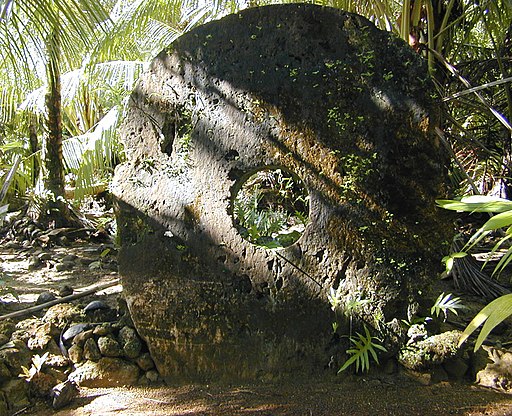Here’s What Makes Money, Money
Cows and stone wheels have something in common with dollar bills: All of them have been used as forms of money. In other words, they’ve all been widely accepted in exchange for goods and services.
That means they’ve also had three functions, or uses, in common, as Economic Education Coordinator Scott Wolla said in “Functions of Money,” an episode of the Economic Lowdown Podcast Series.
Wolla described the functions that money has consistently had over time:
- Money is a store of value. Wolla gave the example of earning $25 today and holding on to the money to spend it in the future. Although he noted that money isn’t a perfect store of value, “holding money is usually a more effective way of storing value than holding other items of value such as corn, which might rot,” he said.
- Money is a unit of account, meaning we use it “to measure value in economic transactions,” Wolla said. What kind of deal did your friend get on her blue jeans? You’ll have a good idea if she tells you how many dollars she paid. It would not be as helpful to know how many bushels of corn she would have had to turn over to get the jeans.
- Money is a medium of exchange, or “widely accepted as a method of payment.”
How Did Money Develop?
Money has evolved, Wolla explained. He outlined three stages and types of money.
Commodity money: Gold and silver coins are examples of commodity money, which “could be used in exchange for other goods and services” but also had its own value and other uses, Wolla said.
Representative money: A paper certificate that could be redeemed for gold in a bank vault is one example of representative money, “a certificate or token that can be exchanged for the underlying commodity,” Wolla said.
“Over time people grew to trust the paper certificates as much as the gold,” he said. “Representative money led to the use of fiat money—the type used in modern economies today.”
Fiat money: The value of fiat money “comes from being declared ‘legal tender,’ an acceptable form of payment, by the government of the issuing country,” Wolla said. U.S. currency is fiat money and doesn’t have its own practical value, like commodity money, nor does it represent a commodity elsewhere.
What Are Some Historic Forms of Money?
Money has taken on many forms, Wolla said.
“Cattle have been used as money at different points in history,” he said.
What category of money do cows fall under? Cattle, which were among the earlier forms of money, could be considered a commodity money, according to a Central Bank of Brazil article.
The residents of Yap Island in what is now Micronesia famously used stone wheels as large as 13 feet in diameter as a medium of exchange, according to a 2018 article on cryptocurrencies by Aleksander Berentsen and Fabian Schär in the St. Louis Fed research publication Review.
What Are Characteristics of Money?

Learn about Yap Island stone money by listening to a “Planet Money” podcast episode and taking a five-question quiz at econlowdown.org.
Photograph by Eric Guinther via Wikimedia Commons and released under the GNU Free Documentation License.
Some forms of money do a better job with money’s three functions—and are more convenient to use.
There are six characteristics of money that make it useful, Wolla said in the Econ Lowdown podcast episode: durability, portability, divisibility, uniformity, limited supply and acceptability.
Judging by how William Henry Furness described the Yap stone money in 1910, the wheels would work well based on three of those characteristics but not based on the others. (Some excerpts from his book were reprinted in a 1915 article in The Economic Journal.)
The money was accepted as payment by the island’s residents, who transferred ownership rights to it virtually and all of whom tracked the ownership. Thus, the system was based on a distributed ledger and was like that of cryptocurrency Bitcoin today, according to the Review article. (For a breakdown on how useful Bitcoin is as money, check out a March 2018 Page One Economics article.)
The stones also were long-lasting. And the stone disks were hard to come by—they were quarried, shaped and shipped from another island hundreds of miles away, Furness reported.
So the stone money ticked the boxes for wide acceptance, durability and limited supply. But it also was heavy, hard to move or shape, and came in a variety of sizes and weights, so it couldn’t be called portable, easy to divide or uniform.
There are some similar problems with using cows as money. Wolla compared using cows as money with using a stack of $20 bills equal to the value of a cow.
Cows aren’t very portable—they’re “difficult to transport to the store,” he said. And a $20 bill can be exchanged for other denominations, like a $10, a $5, four $1 bills and four quarters, but cows aren’t very divisible.
Like the stone money, but unlike $20 bills, cows also are not a very uniform form of money. “Cows come in many sizes and shapes and each has a different value,” Wolla said.
“It seems ‘udderly’ clear at this point [that]—based on the characteristics of money—U.S. $20 bills are a much better form of money than cattle,” Wolla said.
This blog explains everyday economics and the Fed, while also spotlighting St. Louis Fed people and programs. Views expressed are not necessarily those of the St. Louis Fed or Federal Reserve System.
Email Us


